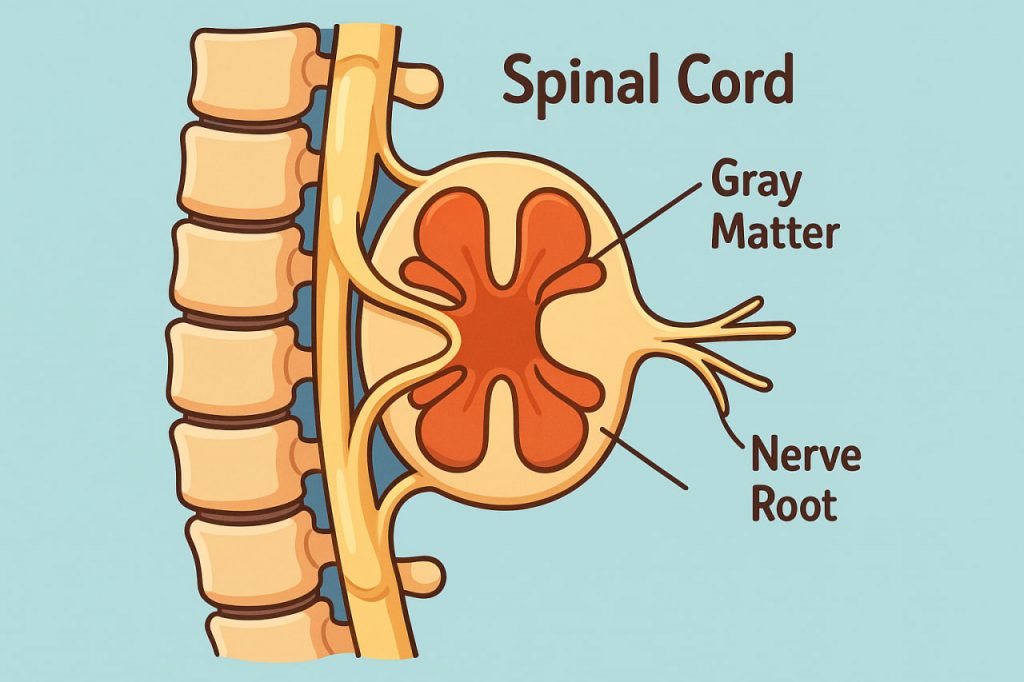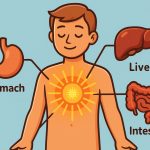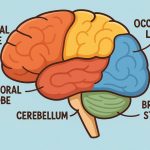The spinal cord is one of the most vital parts of the human nervous system. It acts as a communication highway between the brain and the rest of the body, carrying signals that control movement, sensations, and reflexes. Protected by the spine, it is both powerful and delicate, playing a critical role in maintaining everyday functions.
Anatomy of the Spinal Cord
The spinal cord is a long, cylindrical structure made up of nerve tissue. It begins at the brainstem and extends down through the vertebral column, ending around the lower back. It is surrounded by cerebrospinal fluid, which cushions it from injury, and by protective layers called meninges.
Segments and Nerve Roots
The spinal cord is divided into 31 segments, each giving rise to a pair of spinal nerves. These nerves branch out to different areas of the body:
- Cervical region (neck) – controls head, neck, arms, and diaphragm.
- Thoracic region (chest) – manages the torso and parts of the arms.
- Lumbar region (lower back) – handles the legs and lower body.
- Sacral region (pelvis) – connects to bladder, bowel, and sexual functions.
Gray Matter and White Matter
The spinal cord is composed of two main types of tissue:
- Gray matter – located in the center, shaped like a butterfly, it contains neuron cell bodies that process information.
- White matter – surrounds the gray matter and consists of nerve fibers (axons) that transmit signals up and down the spinal cord.
Functions of the Spinal Cord
- Signal Transmission – carries sensory information from the body to the brain and motor commands from the brain to the body.
- Reflexes – enables quick, automatic responses to stimuli (e.g., pulling your hand away from a hot surface).
- Coordination – helps synchronize complex movements and bodily functions.
Spinal Cord Injuries
Damage to the spinal cord can result in partial or complete paralysis or loss of sensation below the level of the injury. The severity depends on the location and extent of damage. While medical advances such as rehabilitation and neuroprosthetics offer hope, prevention remains crucial.
Conclusion
The spinal cord is a lifeline connecting the brain to the body. Without it, communication within the nervous system would be impossible. Protecting the spine through healthy posture, exercise, and safety measures is essential for long-term well-being.
Glossary
- Spinal cord – the central nerve pathway connecting brain and body.
- Cerebrospinal fluid – protective liquid surrounding the brain and spinal cord.
- Reflex – an automatic, rapid response to a stimulus.
- Gray matter – tissue in the spinal cord containing neuron bodies.
- White matter – tissue made of axons that transmit nerve signals.


